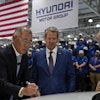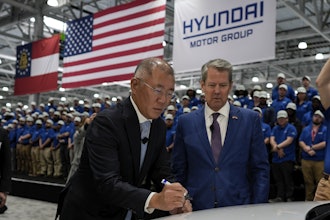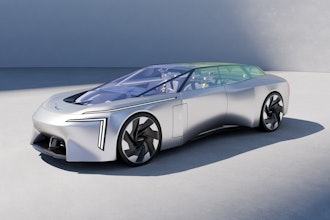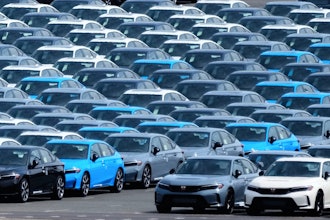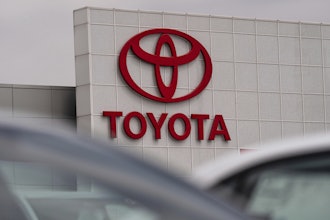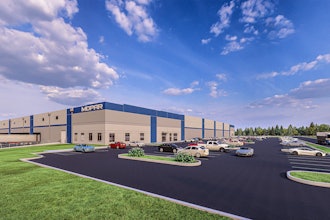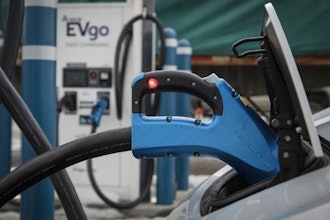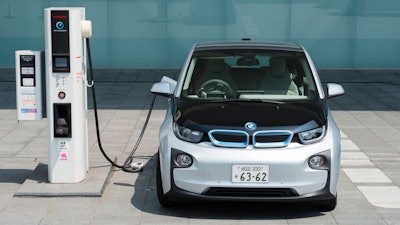
AMP, or Auto Motive Power, is a Los Angeles-based engineering and manufacturing company focused on energy management, or more specifically, charging and battery management systems. The company is led by co-founder and CEO Anil Paryani. He’s held roles with leading industry players like Honda, Tesla and Faraday Future in developing electric vehicle powertrains and battery management solutions.
This background, combined with the more than 30 patents he holds for systems that control range, charging time and performance for electric vehicles, puts him in a unique position to discuss some of the biggest challenges facing the automotive industry as it looks to expand electric vehicle offerings.
Jeff Reinke, editorial director: Perhaps the biggest question about EVs is range. What do you feel are the primary reasons that some automakers are able to provide better power efficiency and longer ranges between charging?
Anil Paryani, CEO & Co-Founder, AMP: Vehicle chassis efficiency, better aerodynamics and lower rolling resistance, which is influenced by things like weight reduction, bearings and suspension setup. We’re also seeing improvements in powertrains, which includes motor efficiencies and advanced battery management, which “unlocks” energy from the battery.
At AMP, our CEMS (Complete Energy Management Solutions) systems affect several aspects – from battery, weight reduction to that critical piece of unlocking energy, while guaranteeing the highest levels of safety when it comes to managing that energy.
JR: What are some of the greatest challenges in expanding EV range?
AP: There are already affordable EVs that get well over 200 miles range per charge. This directly competes with gas vehicles and meets 98 percent of most people’s daily driving needs. In my opinion, what is not competitive is fast charging infrastructure, which directly impacts the practicality of electric vehicles for consumers – and has been a challenge for mass electrification to this point.
I believe this should be one of the focuses of the Biden Infrastructure Bill and/or other related legislation.
If we want to really improve EV range, fundamentally, higher cell energy density is also key. The good news is there are some great advancements around the corner based on silicon-doped anode technology.
JR: What do you feel are some of the greatest safety challenges when it comes to EV-related safety?
AP: When if it comes automotive applications, crashes are very hard to solve. In many ways, a lithium battery cell is more combustible than gasoline. Fortunately, EVs actually have an amazing crash safety record, mainly due to positioning the battery pack away from the crash compression zones.
The main challenge arises when there is a thermal event in a cell or module. How do you ensure the fire doesn’t spread through the rest of the pack before emergency personnel arrive?
From an electronics controls perspective, AMP uses the highest safety-rated hardware and software to ensure the battery will not be over-charged or discharged to ensure safe and long-life operation while getting every watt-hour of energy from the pack. This is actually an incredibly underappreciated factor when it comes to energy management.
JR: Speaking of the battery, it’s extremely expensive to replace. Do you see replacement costs coming down any time soon?
AP: This is not a barrier. Interestingly, very few people have actually paid for an upgrade of a battery pack. Warranties are typically more than eight years. Once a consumer is driving an EV, they realize they can get away with very little range on a daily basis, so even if their 250-mile battery pack degrades by 25 percent over 10 years, it is still a very usable vehicle.
Most Americans buy a new car after 10 years anyway. The main challenge, again, points back to infrastructure. Particularly, if work-place charging was ubiquitous, then the used EV re-sell value will be very high, even with a partially deteriorated battery.
JR: Tesla seems to get the most headlines when looking at EVs. Do you think Elon Musk and Tesla are good “poster children” for the EV marketplace?
AP: Absolutely. Tesla didn’t try to go out and make a great EV. Tesla designed a great car that was safer, faster and more usable, which happened to be electric. While Tesla was introducing the Roadster and the Model S, traditional automakers were still really tinkering around with EV “econoboxes,” which the market didn’t really want anyway. Finally, the traditional OEMs are coming out with some exciting products.
JR: Which automakers do you think have the best EV offerings right now, and do you think that will change over the next couple of years?
AP: On paper, the Ford Mach-E is a very competitive and exciting product. And sales are beginning to pick up for the Jaguar I-Pace, which is also a nicely styled compact SUV. Hyundai and Kia’s EVs are also very efficient and a great value. From a pure performance standpoint, the Porsche Taycan is the leader at this point.
Deliveries of Tesla’s new Model S Plaid begin in a few months, and it will likely surpass even hypercars in straight-line performance metrics. The GM Hummer EV looks pretty awesome, too. And, of course, competition will only continue to grow with various newer EV startups starting production within the next couple of years.
JR: If you could give those in EV production one gift, what would it be?
AP: Working capital. Traditionally, the markets have shied away from investing in manufacturing companies. Tesla has demonstrated that capital-intensive manufacturing businesses can grow, scale and be profitable. I expect to see a tremendous amount of money pouring into new EV plants in the future.


